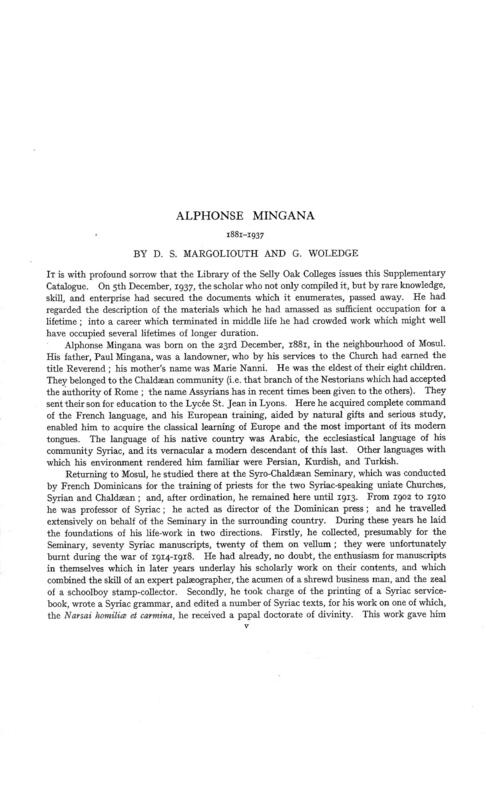-
Title
-
Catalogue Of The Mingana Collection of manuscripts
-
Creator
-
Alphonse Mingana
-
Date
-
1937
-
Description
-
Margoliouth and Woledge outline Alphonse Mingana’s background and use that to clarify the period’s terminology. Mingana, born near Mosul in 1881, came from the Chaldean community—defined in the preface as the branch of the Nestorians that accepted the authority of Rome. His native language was Arabic; the ecclesiastical language of his community was Syriac, and the vernacular was a modern descendant of Syriac (Neo-Aramaic). Educated at the Lycée St. Jean in Lyon, he returned to Mosul to study at the Syro-Chaldean Seminary, run by French Dominicans for the two Syriac-speaking Uniate churches (Chaldean and “Syrian”). From 1902 to 1910 he taught Syriac, directed the Dominican press, traveled on the seminary’s behalf, and built two pillars of his later scholarly career: collecting Syriac manuscripts (about 70, including 20 on vellum, later burned during the First World War) and editing/publishing Syriac texts (including Narsai’s works, which earned him a papal doctorate).
Crucially for naming, the preface draws a clear contrast between Chaldeans and those whom it says have “in recent times” been called Assyrians—that is, the non-Catholic heirs of the Church of the East. In other words, Margoliouth and Woledge treat “Chaldean” as the Catholic, Rome-united stream of the historic East-Syrian tradition, and “Assyrian” as a modern label applied to the others. The passage thus frames Mingana’s identity and scholarly world within a Syriac Christian milieu where Assyrian as an ethnonym is presented as a recent usage, while Chaldean denotes the Uniate branch.
-
Language
-
English
-
Publisher
-
Catalogue of the Mingana Collection of Manuscripts, Alphonse Mingana, 1937 — Preface by D. S. Margoliouth & G. Woledge (p. v).
-
archive.org
-
Subject
-
Syriac Christianity


